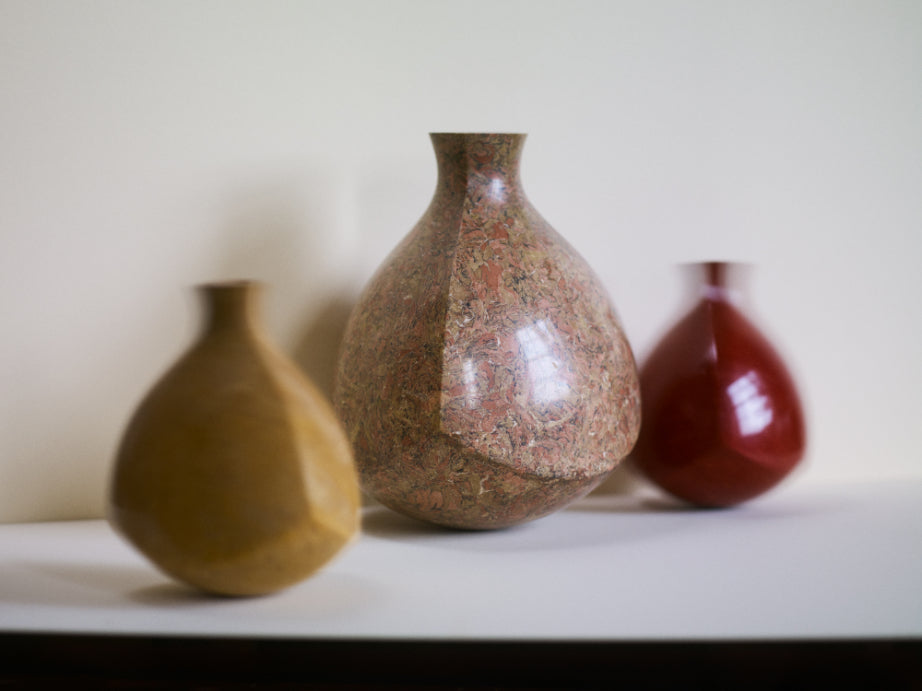Scagliola Vessels
Chalk Plasterfrom
£1,800.00
Description
Vesuvius: These vessels are made from gypsum, pearl glue and natural pigments, finely polished and finished with poppy seed oil. The deep red comes from Rosso Ercolano & Ossido Ferro Rosso, pigments from the historic manufacturer in Verona called Dolci Colori. Rosso Ercolano is a natural earth pigment found near the town of Ercolano at the foot of Mount Vesuvius.
Height 20cm, Diameter 16cm.
Fife Ochre: Scagliola developed in the 1590s in Bavaria and northern Italy for architectural work to mimic marble. These vessels are made from gypsum plaster and natural pigments, formed in moulds, then finished with poppy seed oil. The pigments here are composed of a variety of different ochres collected along the Fife coast between Aberdour and Buckhaven.
Height 20cm, Diameter 16cm
Cullaloe Cut & Pilkham Brae: The shape of the scagliola vessel is based on a Reuleaux tetrahedron or a Meissner triangle – where a sphere meets a pyramid, which creates a ball that can roll but never completely topple over. The form is classical but timeless, and consciously intriguing. “We love how they move,” Ffion and Steven say, “They are unusual but familiar, manmade and natural, simultaneously.” This vessel uses pigments made from materials collected at Cullaloe Cut & Pilkham Hill, Fife.
Height 30cm, Diameter 24cm
You shouldn’t put water in these vessels. They are oil-finished but can also be waxed for an additional layer of protection. They can be repaired and re-polished if they get scratched. Otherwise just wipe them down if and when they get dusty.
Related Content
Chalk Plaster
About the makerFfion and Steven Blench root their practice in the rich history of plain and decorative plasterwork. Together as Chalk Plaster, they work on historic buildings throughout Britain and Europe, restoring decorative plaster work from as many historic periods as exist.
Chalk Plaster
About the makerFfion and Steven Blench root their practice in the rich history of plain and decorative plasterwork. Together as Chalk Plaster, they work on historic buildings throughout Britain and Europe, restoring decorative plaster work from as many historic periods as exist.


